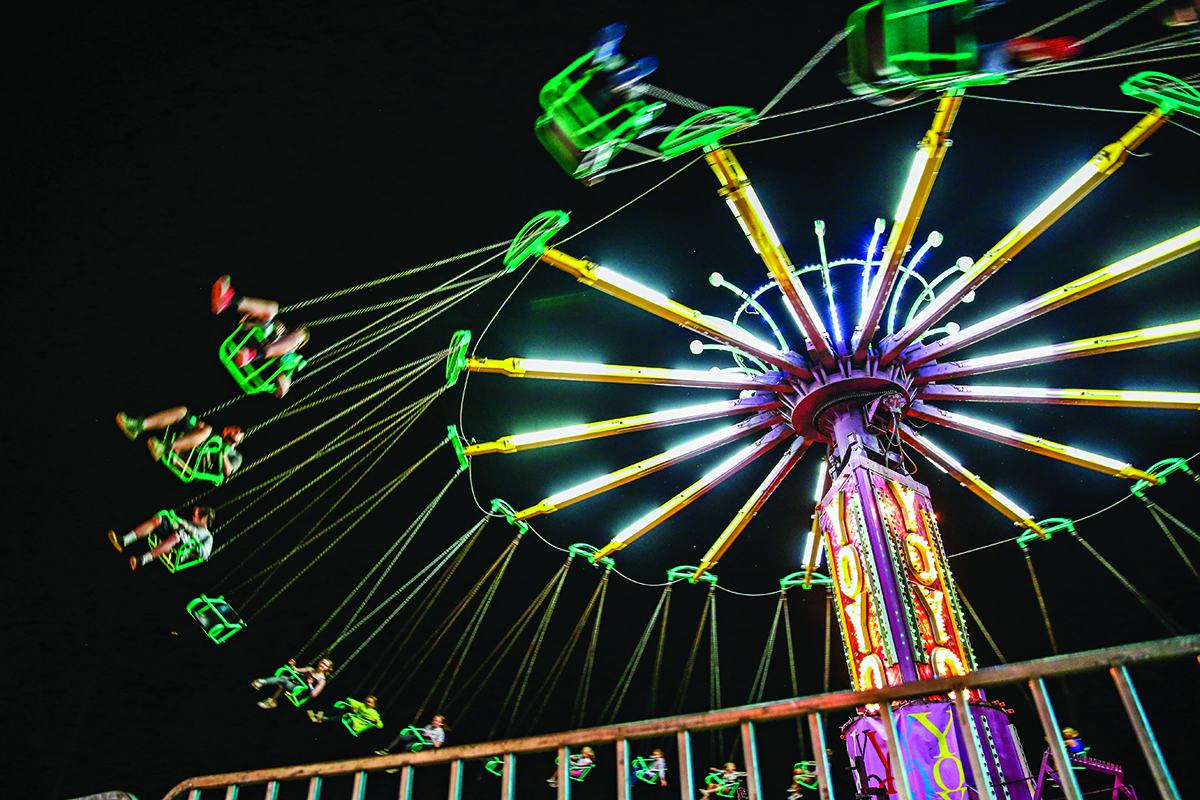Beyond the Fair’s Bright Lights
Apart from the spinning rides and showcase events, the Northwest Montana Fair includes thousands of exhibits, from floriculture to knitting to photography, that showcase local creative talents
By Micah Drew
The days leading up to the Northwest Montana Fair and Rodeo are a flurry of last-minute planning, preparation and primping, as the fairgrounds, booths and stadium prepare to welcome tens of thousands of attendees over fair weekend.
Of the many moving parts that might readily come to mind when imagining fair preparation, competitive judging is not likely one of them, even though it spans the greatest breadth of fair programs.
“The fair just isn’t quite the same without a high level of participation in the competitive programs,” Fair Manager Mark Campbell said. “There are just so many things to see and learn about with the fair competitive program.”
Campbell and the county fair board have always emphasized the educational aspect of the fair, making sure that behind the bright carnival lights, youth members of FFA and 4-H have the chance to show off their livestock and educational projects.
“It’s not the lights and excitement, but it’s first and foremost our best connection back to the community and what these kids are doing,” Campbell said, adding that the number of registered animals this year is an all-time record.
Beyond the numerous animals that will neigh, moo and bleat from their pens over the weekend, there are hundreds of additional exhibits submitted by young and old members of the community looking to showcase their passions.
The official fair book lists eight main categories of non-animal exhibits — Agriculture & Horticulture, Crafts, Dahlias & Gladiolus, Fine Arts, Floriculture, Home Culinary, Needlework and Photography — but within each category are numerous classifications under which exhibits can be entered.
In agriculture and horticulture, for example, there are 129 different classifications, ranging from potatoes (russet, 2), to oddly shaped fruit, to giant squash (summer or winter) to a Mr. Potato head competition, of which there are five separate age categories, with official guidelines stating that apart from requiring one potato, entries are “only limited by the exhibitor’s imagination.”
Campbell says nearly 8,000 entries are received every year, and even though his background is cattle and livestock, he loves seeing people enter a competition that they are passionate about.
“My wife loves the quilts; she’s very passionate about that,” Campbell said. “I really love the kids entries. I like seeing the creativity coming out of those 6-7-8-9-year-olds, whether it’s a Lego build or a drawing. You never know when there will be one that just touches you.”
Flathead resident Dana Higgins has been involved in fair life for more than 50 years, as a competitor herself, watching her kids take part as they grew up and for the last 13 years as superintendent of the photography competition.
“I’m honestly a little bummed this year, because we’re down on entries,” Higgins said. “In 2019, I had 920 entries, and I’ve had years where we had well over 1,000. This year I’m looking at around 450.”
Higgins isn’t sure if the drop in participation is related to COVID-19 or just part of the natural fluctuation, but even with half the number of entries she expected, the days of judging this year were “just nuts.”
“For three days we work pretty hard and put in 12-hour days,” Higgins said of herself and the numerous judges who help out each year. “Then come Wednesday I get to sit back and watch people take it all in.”
Having been part of the fair’s photography realm for more than a decade, Higgins has watched youngsters evolve in their skills, which she says is the most rewarding part of being involved with the fair.
“When you see kids that started when they were 9, 10 years old and then go on to the adult competitions and are winning grand prize, that’s so exciting,” she said. “I always try to push them, too. If they win grand in a category for a few years, I’ll try to push them into the next category. I’ve seen a few go to the professional category and win!”
The exhibition hall at the Western Montana Fairgrounds opens on Wednesday, the first day of week, and patrons can easily spend hours gazing at hundreds of photographs, paintings, quilts and oddly shaped fruits and vegetables.
“When I see the kids come in and see that they won a ribbon or are grand champion and their eyes light up,” Higgins concluded, breaking off with emotion, “that’s what the fair means to me.”